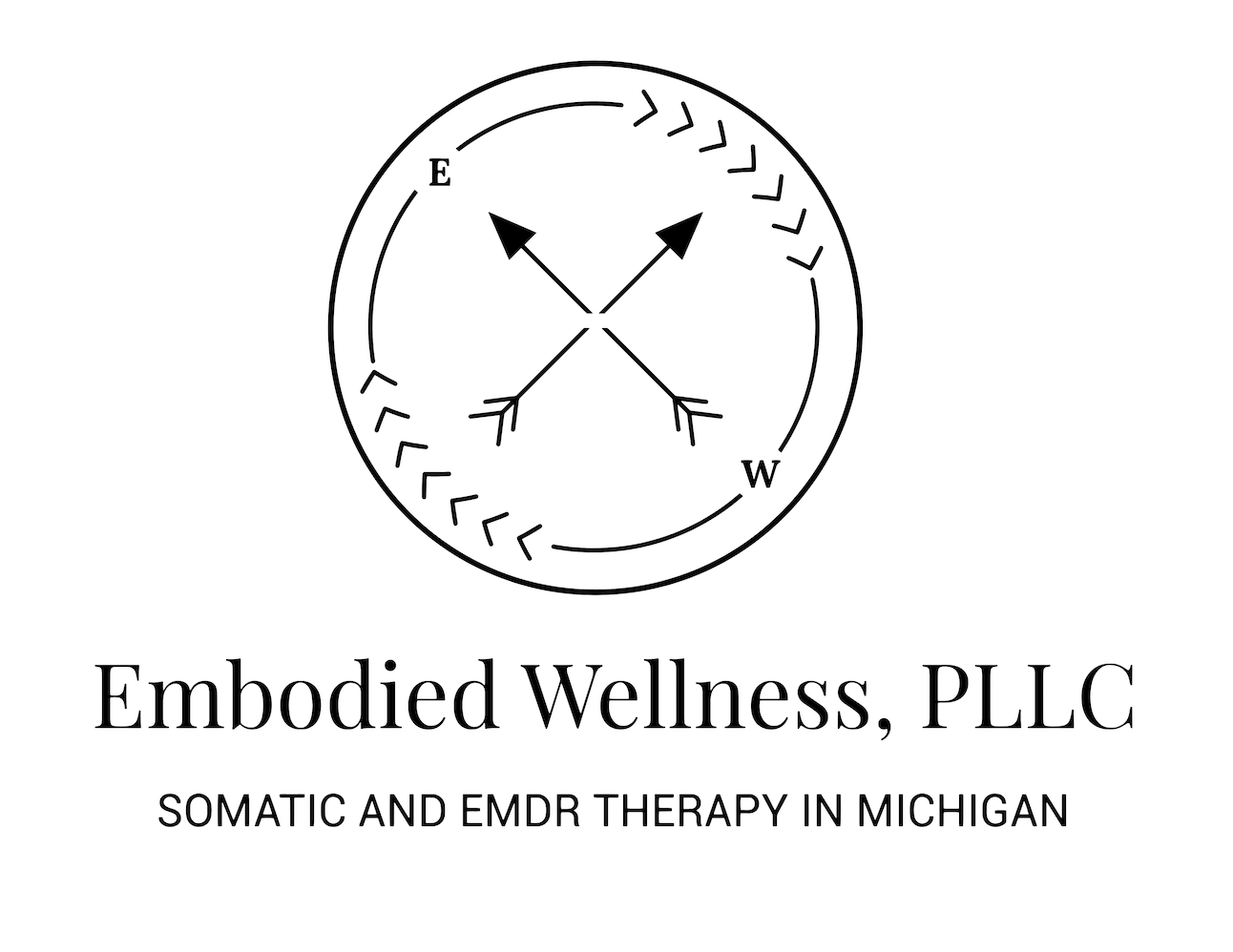Somatic Therapy and Anxiety: Techniques for Grounding and Calm
Anxiety can make your mind race and your body feel out of control. You might feel tense, shaky, or like something bad is about to happen—even if everything around you seems okay. For many people, traditional talk therapy helps. But sometimes, words aren’t enough. That’s where somatic therapy comes in. Somatic therapy focuses on how anxiety shows up in your body, not just your thoughts. It helps you notice and release the tension, fear, and stress that your body holds. This approach can be especially helpful when anxiety feels like it’s living in your chest, your stomach, or your muscles. In this blog, we’ll explore, what somatic therapy is and how it can help with anxiety. We will also introduce you to a few simple somatic techniques you can try at home! We will also go over some signs that at-home techniques might not be enough and when to reach out from a mental health professional.
What Is Somatic Therapy?
The word “somatic” comes from the Greek word soma, which means body. Therefore, somatic therapy is a type of therapy that works with the mind and body together.
Many of us are taught to ignore our bodies. We might push through stress, bottle up feelings, or try to “think away” our emotions. But emotions don’t just live in our thoughts—they also live in our nervous system.
Somatic therapy helps you:
Notice body signals like tight muscles, shallow breathing, or a racing heart
Understand how these signals connect to your emotions
Use movement, breath, and awareness to regulate your nervous system
It’s based on the idea that your body remembers stress, even if your mind tries to forget. When anxiety and trauma gets stuck in your body, somatic therapy helps you release it.
How Anxiety Affects the Body
Anxiety isn’t just in your head—it’s in your whole body. When you feel symptoms of anxiety, your nervous system goes into “fight or flight” mode. That means your body is preparing to face danger, even if there’s no real threat.
You might notice:
Rapid heartbeat
Sweaty palms
Tight shoulders
Upset stomach
Shaky hands or legs
Trouble breathing
Feeling frozen or numb
These body sensations are your system’s way of saying, “I don’t feel safe.” But if your body stays in this state too long, it can leave you feeling drained, tense, and on edge all the time.
Somatic therapy helps reset your nervous system so you can return to a state of calm and safety.
Why Somatic Therapy Online Helps With Anxiety
When anxiety becomes overwhelming, you might try to calm down by thinking logically. But sometimes, your body needs to feel safe before your mind can catch up, not the other way around!!
Somatic therapy teaches you how to listen to your body’s signals without fear. It also gives you tools to ground yourself when anxiety shows up. Over time, you can build more trust in your body and feel more control over your emotions.
Here’s what makes somatic therapy different:
You don’t have to “talk it all out” to heal
It’s focused on the present moment, not just the past
It’s gentle and honors your body’s pace
It works even if you don’t fully understand your anxiety yet
Somatic Techniques
You don’t need special equipment or a therapist to begin using somatic tools. Many of these techniques can be done at home, in school, or at work. Try a few and see which ones work best for you.
1. 5-4-3-2-1 Grounding Exercise
This is a simple way to come back to the present when anxiety makes you feel disconnected.
Here’s how:
5 things you can see: Look around and name five things you see.
4 things you can touch: Feel the texture of your clothes, a chair, or the floor.
3 things you can hear: Listen for background sounds, even if they’re quiet.
2 things you can smell: Take a deep breath—what scents do you notice?
1 thing you can taste: Notice the taste in your mouth or sip water.
This technique helps shift your focus from your anxious thoughts to your senses, helping your nervous system feel more grounded.
2. Progressive Muscle Relaxation
Anxiety often makes your muscles tense without you even noticing. This technique helps you release that tension bit by bit.
Try this:
Sit or lie down in a quiet place.
Start with your toes. Squeeze them tight, hold for 5 seconds, then let go.
Move up through your body—calves, thighs, stomach, hands, arms, shoulders, neck, and face.
With each part, tense, hold, and release.
By relaxing your muscles, you send a message to your brain that says, “It’s okay to calm down.”
3. Somatic Tracking
This is about paying attention to your body in a curious, non-judgmental way.
Here’s how:
Sit quietly and scan your body from head to toe.
Notice where you feel tension, warmth, or discomfort.
Breathe gently and say to yourself, “This feeling is allowed to be here.”
Over time, this practice helps you build tolerance for uncomfortable sensations without panicking.
4. Orienting
When you feel anxious, your eyes often narrow and your body tenses up. “Orienting” is a gentle way to help your nervous system realize you are safe.
Try this:
Slowly look around the room.
Let your eyes land on something that feels pleasant or interesting.
Turn your head slowly and notice what feels safe(r) in your space.
This tells your brain, “There’s no danger right now,” which helps bring your system back to calm.
5. Grounding With the Breath
Your breath is one of the fastest ways to connect with your body. Slow, deep breathing helps shift you out of anxiety and into safety.
Try this:
Inhale through your nose for 4 seconds
Hold for 4 seconds
Exhale through your mouth for 6 seconds
Repeat for 2–3 minutes
Place your hands on your belly as you breathe to feel more connected.
Somatic Therapy Online for Different People and Needs
Somatic therapy can help many kinds of people—not just those with severe anxiety. It’s helpful for:
Teens and adults who feel “stuck” in their anxiety
People recovering from chronic stress or burnout
Survivors of medical trauma or emotional neglect
BIPOC individuals dealing with generational or racialized stress
Anyone who wants to feel more at home in their body
Because somatic therapy honors your body’s wisdom, it can be tailored to your unique needs, history, and identity.
When to See a Somatic Therapist
While somatic exercises are powerful, working with a trained somatic therapist can take your healing even further. A somatic therapist is trained to help you safely explore anxiety in your body. They’ll guide you through deeper techniques like:
Sensorimotor Psychotherapy
EMDR with a somatic focus
Polyvagal-informed therapy
You may want to find a somatic therapist if:
Your anxiety is getting worse or affecting your daily life
You feel disconnected from your body or emotions
Talk therapy hasn’t helped you feel better
You’ve been through trauma and want a body-based approach
You want to feel more calm, present, and self-aware
Look for a licensed therapist with somatic training who makes you feel safe, respected, and seen.
It’s Not About Fixing You—It’s About Coming Home to Yourself
It’s common for people with anxiety to feel broken or ashamed. But anxiety is not a flaw—it’s your body’s way of trying to protect you and signal to you that something is wrong.
Somatic therapy teaches you how to listen to that message, not fear it. When you learn to slow down, feel your body, and give it what it needs, you create a sense of safety from the inside out.
The goal isn’t to get rid of anxiety forever—it’s to learn how to move through it with more ease like a flowing river. And when you do, you feel more grounded, more empowered, and more connected to yourself.
See a Somatic Therapist in Detroit
Anxiety is hard—but you don’t have to face it alone, and you don’t have to fight against your body to heal. Your body is not the enemy. In fact, it may hold the very answers you’re looking for. Somatic therapy offers a powerful path to calm by helping you feel safe in your own skin. Whether you use simple grounding tools or work with a therapist, every step you take toward your body is a step toward healing. If you’re looking for a somatic therapist or want to learn more about body-based anxiety support, reach out to our team today. You deserve to feel calm, confident, and at home in yourself.
Be matched with one of our somatic therapists.
Reduce the impact of anxiety in your body!
Other Online Counseling Services Available in Michigan
At Embodied Wellness, PLLC we offer a variety of holistic treatment services for adults and teens with anxiety, depression, and OCD. We also specialize in many forms of trauma therapy including Somatic therapy such as Somatic Experiencing, DBT, CBT, ERP, Internal Family Systems, and EMDR therapy. We offer online therapy in Michigan. Start getting past your trauma today by visiting our Detroit-based practice. We also provide low-cost therapy.
About the Author:
Sarah Rollins, LMSW, SEP is the founder of Embodied Wellness, PLLC, a group therapy practice providing online therapy in Michigan. She is passionate about expanding awareness of somatic therapy as a way to treat and heal trauma. She incorporates other holistic treatments into her practice including EMDR and IFS.





